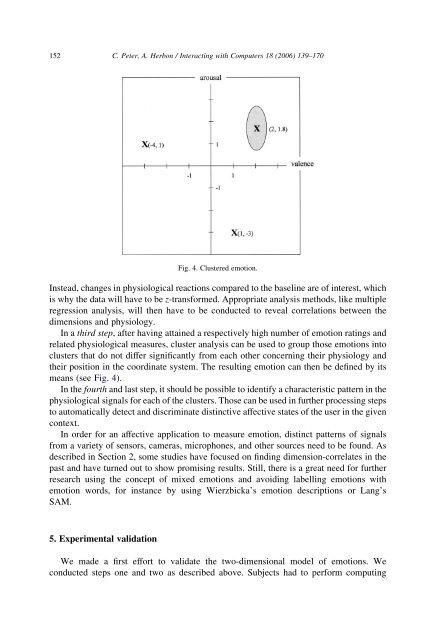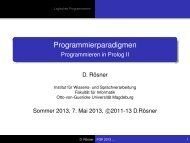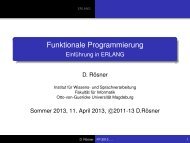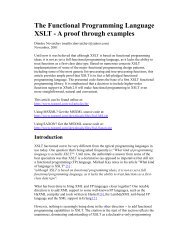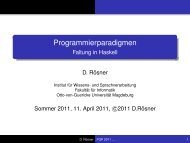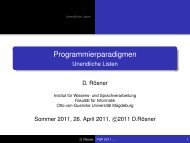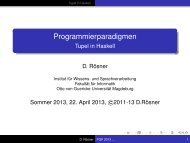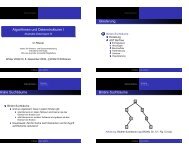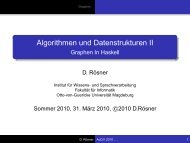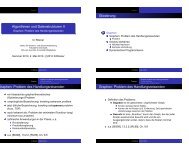Emotion representation and physiology assignments in digital systems
Emotion representation and physiology assignments in digital systems
Emotion representation and physiology assignments in digital systems
You also want an ePaper? Increase the reach of your titles
YUMPU automatically turns print PDFs into web optimized ePapers that Google loves.
152<br />
C. Peter, A. Herbon / Interact<strong>in</strong>g with Computers 18 (2006) 139–170<br />
Fig. 4. Clustered emotion.<br />
Instead, changes <strong>in</strong> physiological reactions compared to the basel<strong>in</strong>e are of <strong>in</strong>terest, which<br />
is why the data will have to be z-transformed. Appropriate analysis methods, like multiple<br />
regression analysis, will then have to be conducted to reveal correlations between the<br />
dimensions <strong>and</strong> <strong>physiology</strong>.<br />
In a third step, after hav<strong>in</strong>g atta<strong>in</strong>ed a respectively high number of emotion rat<strong>in</strong>gs <strong>and</strong><br />
related physiological measures, cluster analysis can be used to group those emotions <strong>in</strong>to<br />
clusters that do not differ significantly from each other concern<strong>in</strong>g their <strong>physiology</strong> <strong>and</strong><br />
their position <strong>in</strong> the coord<strong>in</strong>ate system. The result<strong>in</strong>g emotion can then be def<strong>in</strong>ed by its<br />
means (see Fig. 4).<br />
In the fourth <strong>and</strong> last step, it should be possible to identify a characteristic pattern <strong>in</strong> the<br />
physiological signals for each of the clusters. Those can be used <strong>in</strong> further process<strong>in</strong>g steps<br />
to automatically detect <strong>and</strong> discrim<strong>in</strong>ate dist<strong>in</strong>ctive affective states of the user <strong>in</strong> the given<br />
context.<br />
In order for an affective application to measure emotion, dist<strong>in</strong>ct patterns of signals<br />
from a variety of sensors, cameras, microphones, <strong>and</strong> other sources need to be found. As<br />
described <strong>in</strong> Section 2, some studies have focused on f<strong>in</strong>d<strong>in</strong>g dimension-correlates <strong>in</strong> the<br />
past <strong>and</strong> have turned out to show promis<strong>in</strong>g results. Still, there is a great need for further<br />
research us<strong>in</strong>g the concept of mixed emotions <strong>and</strong> avoid<strong>in</strong>g labell<strong>in</strong>g emotions with<br />
emotion words, for <strong>in</strong>stance by us<strong>in</strong>g Wierzbicka’s emotion descriptions or Lang’s<br />
SAM.<br />
5. Experimental validation<br />
We made a first effort to validate the two-dimensional model of emotions. We<br />
conducted steps one <strong>and</strong> two as described above. Subjects had to perform comput<strong>in</strong>g


